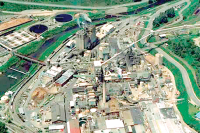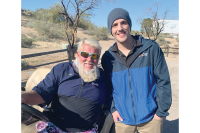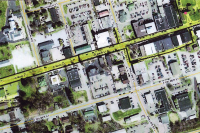“Tunnel-phobia” has gotten worse as years go by
 Leading a field trip isn’t complicated. But there may be more to it than you suppose. It helps if you know ahead of time where you’re going to make stops; where to eat lunch; and where the bathrooms are situated.
Leading a field trip isn’t complicated. But there may be more to it than you suppose. It helps if you know ahead of time where you’re going to make stops; where to eat lunch; and where the bathrooms are situated.
On a scale of one-to-10 I’d give lunch a “7.5;” pre-designated stops a “9;” and bathroom awareness a “9.5.” Some years ago “bathrooms” were a “5,” but their importance has risen of late. I have recently added another item that I give a “10.”
Make sure the driver of your vehicle knows where the on-off switch for the headlights is located. And, furthermore, that he or she pays enough attention to have them turned on “prior” to entering a tunnel. Turning them on “after” entering is better than not knowing “how” to turn them on at all. But “before” is better than “after.”
Sometimes I can’t avoid doing either, but I don’t like driving at night and I don’t like driving or riding as a passenger through a tunnel. Well-lit tunnels are bad enough. Unlit tunnels are, for me, a species of hell.
There’s probably a technical term for it, but I’ve got what might be called “tunnel-phobia.” It kicks in when I see a road sign announcing there’s one just around the next bend. And it lasts until I emerge into daylight again. If I’m driving at night and have to negotiate a tunnel, I am not a happy camper. I grit my teeth and curse the “double-darkness.”
Along the Blue Ridge Parkway, Ferrin Knob Tunnel No. 1 at milepost 400.9 is the first and longest of the so-called triplet tunnels (the local people once referred to fern glades as “ferrins”). Ferrin Knob Tunnel No. 2 is located at milepost 401.3 and Ferrin Knob Tunnel No. 3 is located at milepost 401.5. Whenever I have to negotiate this triple-headed monster I think of what Dante said as he prepared for his ascent into the inferno: “In the middle of the journey of our life, I came to myself, in a dark wood, where the direct way was lost … thinking of it recreates the fear.”
Related Items
I’ve never liked driving at night, but “tunnel-phobia” is a fairly recent affliction. It was initiated maybe 10 years ago when I was leading a field trip along the Blue Ridge Parkway for a regional facility. A young lady was driving the van for the facility. She wasn’t a competent driver. I bit my tongue several times but finally asked her (in a nice way) to slow it down. I discovered the hard way that she didn’t have a clue where the on-off switch for the headlights was located.
At the first long tunnel south of Balsam Gap (headed toward Mt. Pisgah) she was talking away and suddenly we were enveloped in total darkness. Reflexively, I jammed my left foot on the brake before we collided with the wall.
There we sat in the darkness: me … our driver … and eight or so participants. One of the guys in the back asked, “Where are we?” and a lady answered, “Under the ground.” Fortunately, no other cars entered the tunnel while we fumbled in the dark for the switch. It wasn’t on the turn signal stem. Feeling along the dash on the left side of the steering wheel column, we found it. It was one of those roller-switches that are difficult enough to locate in daylight.
But, alas, I didn’t learn my lesson. Several years later the same thing (more or less) happened again. It was a different facility, a different driver, and a different tunnel. This time we were headed north along the parkway from the Bent Creek exit to Mt. Pisgah. My driver seemed competent. I let my guard down and assumed that he knew all about headlight switches.
Wrong!
Suddenly we were “under the ground” again. Once again no other vehicles came along and we didn’t hit the wall. The switch was easy to find. But I learned my lesson.
At the risk of being labeled a cranky old coot, I now deliver my “Hello, do you, by chance, know where the headlight switch on this vehicle is located?” sermon before each and every field trip. I suggest that you do the same under similar circumstances.
George Ellison wrote the biographical introductions for the reissues of two Appalachian classics: Horace Kephart’s Our Southern Highlanders and James Mooney’s History, Myths, and Sacred Formulas of the Cherokees. In June 2005, a selection of his Back Then columns was published by The History Press in Charleston as Mountain Passages: Natural and Cultural History of Western North Carolina and the Great Smoky Mountains. Readers can contact him at P.O. Box 1262, Bryson City, N.C., 28713, or at This email address is being protected from spambots. You need JavaScript enabled to view it..









